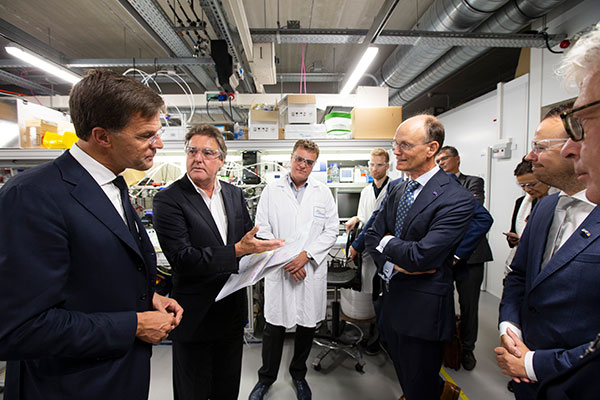Market and Products
REDstack development and products
REDstack originats as a spin-off company from the water technology institute Wetsus. In 2004, Wetsus institute started the theme 'Blue Energy' with the aim of generating energy from fresh and salt water. It soon became clear that this is a promising development and this was reason for a number of participants in Wetsus to establish REDstack. REDstack is owned by its founder and entrepreneur Pieter Hack: at the moment Pieter’s company W & F Technologies BV is mother and single shareholder of REDstack.


After a period of preparation, a pilot plant in Breezanddijk on the Afsluitdijk was built. The Dutch King Willem-Alexander conducted the grand opening in 2014. The test stacks set up there were developed by REDstack together with several project partners. REDstack is responsible for both the housing of the stacks, application of ion-exchange membranes as well as the entire operation of this plant.
RED
REDstack focuses on delivering the following RED products
- Stacks specifically designed for customer/user deployment
- Basic design of the total installation
- Licenses
Energy from water with RED, market size
From the mixing of 1 m³ of river water with 1 m³ of sea water, 0.5 kilowatt hours of electricity can theoretically be obtained at 25 oC. This corresponds to a power of 1.8 MW from a flow rate of 1 m³/s fresh and 1 m³/s salt water. In practice, there are all sorts of non-ideal conditions so that 1 MW is a more realistic figure. The energy density of this "fuel" is significantly less than fossil fuels such as coal or petroleum. On the other hand, very large amounts of water are available. The outflow of all the world's rivers combined is 1.13 million m³ per second. This yields a theoretical potential of about 1 TW (1 Terawatt = million megawatts). 1 TW equals 30% of current world electricity production/consumption. In theory, therefore, a large part of the current fossil power plants could be replaced by RED plants. Of course, the practice is much more unruly. First of all, the efficiency is not 100% and moreover, not every estuary is suitable as a location for this form of energy generation. And in the places that do qualify, the environment, shipping and infrastructure have to be taken into account. Nevertheless, there are very many places worldwide, where this sustainable renewable energy can be extracted.
It is quite possible to identify a number of promising locations for the application of RED. These are remote places that are not connected to the electricity grid but where fresh and salt water are available. Examples are the vast areas of coastline in far eastern Russia on the Sea of Japan and numerous islands in Oceania, as well as low-lying delta areas. This will also provide populations in these "difficult" areas with reliable, renewable energy.
ED
ED (ElectroDialysis) is a technology for producing fresh water from salt or brackish water. By creating a voltage difference - also in a stack - the ions from the salt water are forced to move through the membranes, thus achieving desalination.